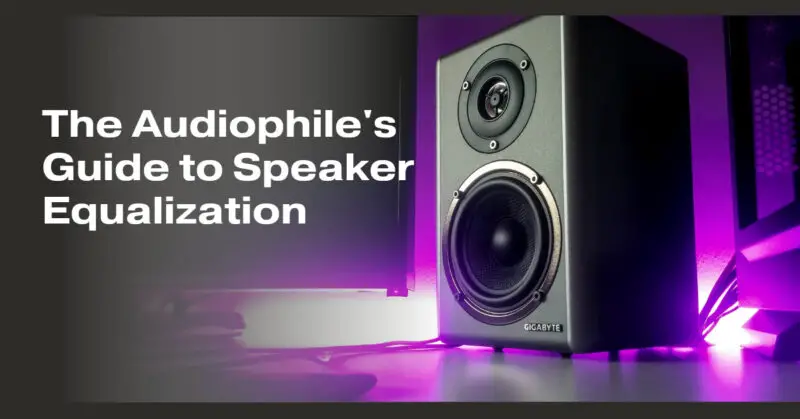As an audiophile, achieving the perfect sound is likely a top priority, and speaker equalization is a powerful tool to help you achieve that goal. Equalization, or EQ, allows you to fine-tune your speaker system to match your listening preferences and the acoustic characteristics of your listening environment. In this guide, we’ll explore the essentials of speaker equalization and how to use it effectively to enhance your audio experience.
1. Understanding Equalization:
Equalization involves adjusting the frequency response of your speakers to compensate for irregularities in sound caused by various factors:
- Room Acoustics: The size, shape, and furnishings in your listening room can introduce reflections, resonances, and frequency imbalances.
- Speaker Characteristics: Every speaker has its unique frequency response, and even high-quality speakers may have slight deviations from flat response.
- Personal Preferences: Your individual taste in sound may lead you to prefer certain frequency ranges over others.
2. Types of Equalizers:
There are two main types of equalizers:
- Graphic Equalizers: These feature a set of sliders or knobs, each controlling a specific frequency band. Graphic equalizers are intuitive and easy to use, allowing you to adjust the volume of different frequency ranges.
- Parametric Equalizers: Parametric equalizers provide more precise control. They allow you to adjust specific parameters like center frequency, bandwidth (Q), and gain for each band, offering greater flexibility in shaping the sound.
3. Speaker Placement and Room Acoustics:
Before diving into equalization, consider optimizing your speaker placement and addressing room acoustics:
- Speaker Placement: Experiment with speaker placement to minimize room-related issues. Avoid placing speakers too close to walls or corners to reduce bass build-up.
- Room Treatment: Acoustic treatments like bass traps, diffusers, and absorbers can help minimize room-induced sound issues.
4. Measuring and Calibrating:
To effectively equalize your speakers, it’s helpful to measure the response of your system. You can use a calibrated microphone and room measurement software to identify problematic frequency areas.
- Room EQ Wizard (REW): REW is a popular free software tool that allows you to measure your room’s response and provides recommendations for equalization.
5. Equalization Tips:
- Start Flat: Begin with a flat or neutral response. Set all equalizer bands to their default positions or bypass them to listen to your speakers’ unaltered sound.
- Target Frequency Issues: Identify specific frequency ranges that need adjustment. These are typically areas where you notice peaks or dips in the response during measurement.
- Take a Surgical Approach: Use parametric equalizers to target and correct problematic frequencies rather than making broad adjustments.
- Use Your Ears: While measurements provide valuable data, trust your ears. Listen to music you’re familiar with and make adjustments to improve the sound to your liking.
- A/B Testing: Compare the sound with and without equalization to ensure that your adjustments genuinely enhance the listening experience.
- Save Presets: If your equalizer allows it, save presets for different music genres or listening preferences.
6. Beware of Over-EQ:
Avoid excessive equalization, as it can lead to unnatural and fatiguing sound. Subtle adjustments often yield the best results.
7. Room Correction Systems:
Consider investing in room correction systems like Audyssey, Dirac Live, or Anthem Room Correction (ARC). These systems automate the measurement and equalization process, simplifying the task.
8. Regularly Reevaluate:
Revisit your speaker equalization settings periodically, as room conditions and your preferences may change over time.
9. Enjoy the Journey:
Equalization is a powerful tool that allows you to tailor your audio experience to your liking. Embrace the process of fine-tuning your system, and don’t be afraid to experiment until you achieve the sound that brings you the most joy.
Remember that the goal of speaker equalization is to enhance your listening pleasure. By understanding the basics and approaching equalization with care and precision, you can unlock the full potential of your speakers and enjoy a truly audiophile-quality sound experience.

